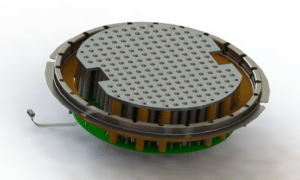Latest News

MAPS satellite propulsion system. Photo: PacSci EMC.
PacSci EMC successfully completed initial payload tests of new technologies on its on-orbit technology demonstrator satellite, PacSciSat, on June 30. After a one-week satellite commissioning period in a 515 km sun synchronous polar orbit, PacSci EMC successfully passed built-in tests on both its primary and redundant Smart Energetics Architecture (SEA) sequencing system and devices, fired two Smart Initiators, and demonstrated pyrotechnic rocket-based attitude control maneuvers.
“This phase of the mission proved that our SEA-based networked sequencing system firing Smart Initiators, performs reliably and precisely as commanded and is now at Technology Readiness Level 9 (TRL-9),” said Greg Scaven, PacSci EMC’s president.
According to PacSci EMC, the low power SEA sequencing system is capable of firing hundreds of pyrotechnic devices with microsecond repeatability and sub-millisecond sequencing. Satellites and spacecraft can use the system to deploy solar arrays, scientific instruments and other devices.
PacSciSat launched on June 22, atop the Indian Space Research Organization’s (ISRO) Polar Satellite Launch Vehicle (PSLV) from the Satish Dhawan Space Centre in India.
Get the latest Via Satellite news!
Subscribe Now